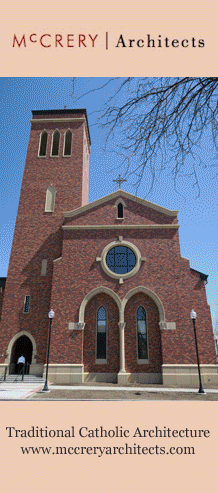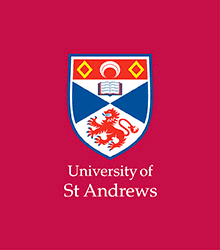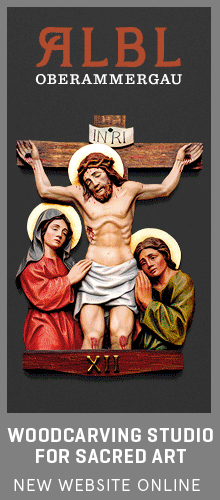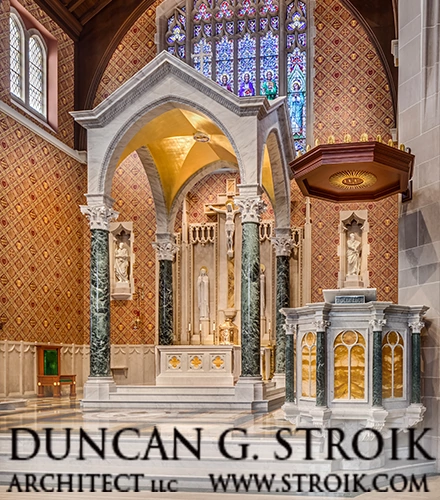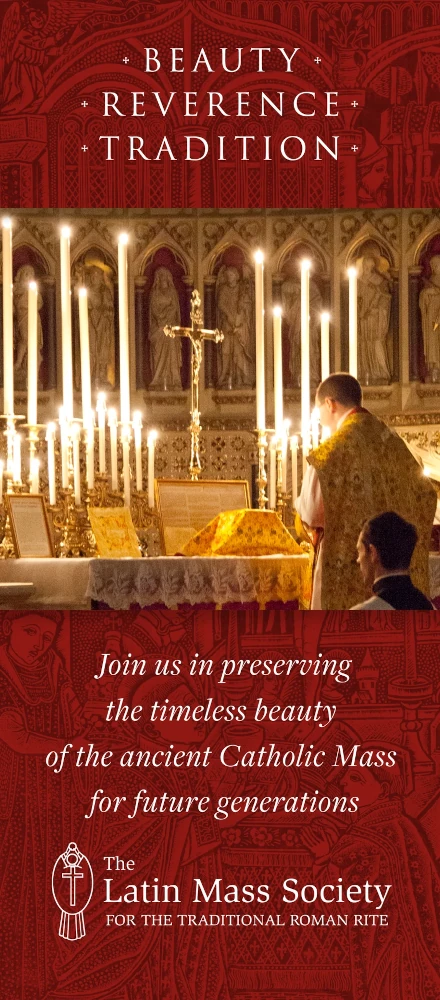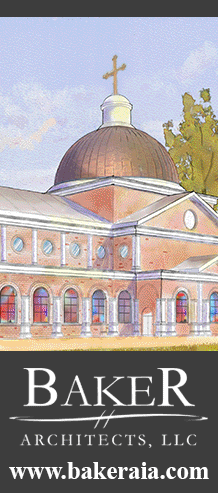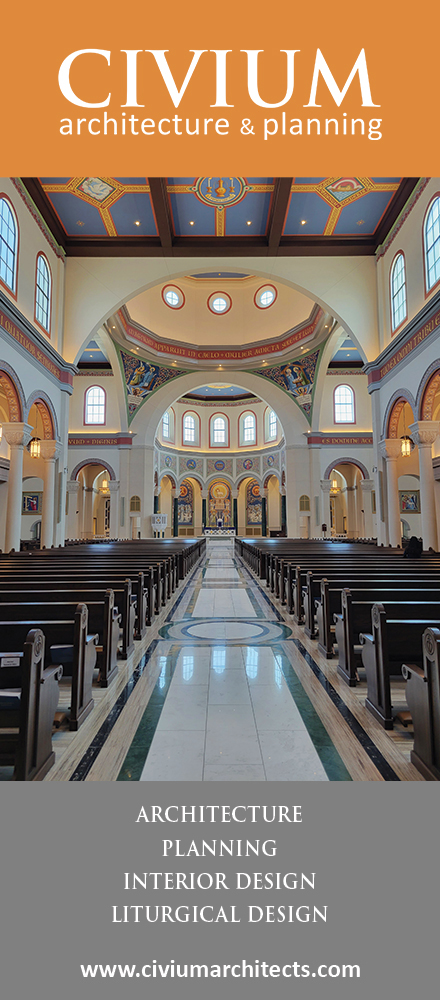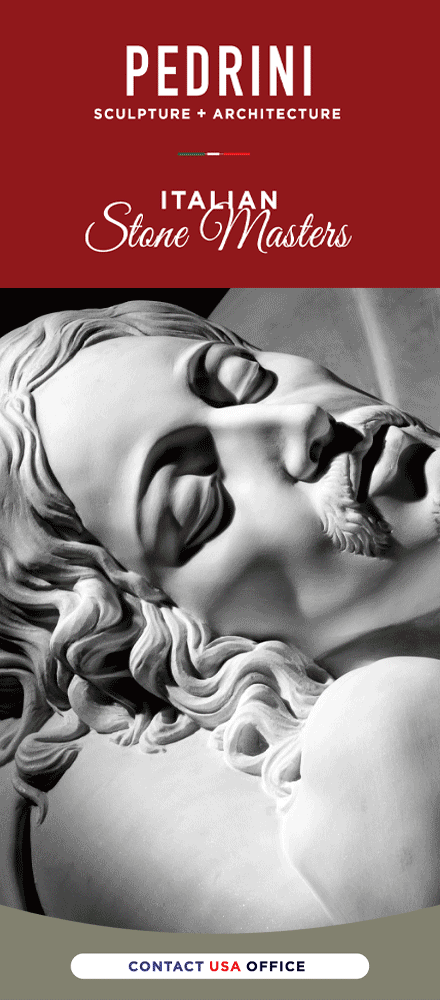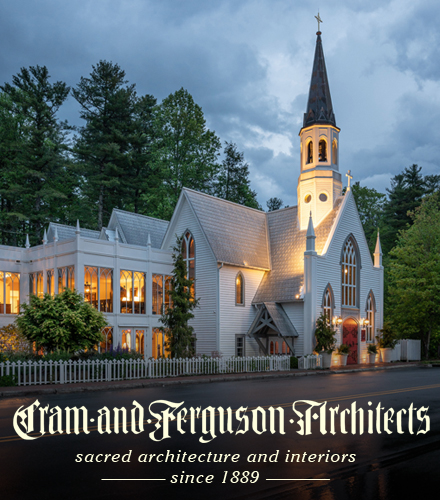One of our readers forwarded me some interesting information about a letter from Archbishop Mark Coleridge of the diocese of Canberra and Goulburn. The letter is entitles "PREPARING THE FEAST: A Pentecost Letter on the Liturgy" and includes some interesting statements on the liturgy.
The entire letter can be read here, but here are a few relevant excerpts.
... Over recent decades, liturgical habits have taken hold, some of which have been beneficial, others detrimental to the celebration of the liturgy. It is never easy to break the hold of bad habits, especially when we do not see them as bad. Openness to learn always involves humility, a preparedness to recognise that I do not know all the answers. In the case of the liturgy, that humility involves a preparedness to learn from the Church, to whom alone the liturgy belongs; and in the new General Instruction and the new translations of the Missal and Lectionary, it is the voice of the whole Church, the Bride of Christ, that we hear.
[...]
Our worship generally has become very chatty, to the point where one of the challenges now is to allow silence to play its part in the liturgy. This might begin with our places of worship. Where once our churches were places of silence for the sake of prayer in the presence of the Blessed Sacrament, the custom has arisen in more recent years for people to talk freely in the churches, certainly before and after Mass. The same is true of the sacristy: where once silence was the rule (again for the sake of prayer and recollection) often now the sacristy has become a noisy and distracting place. Once was too that the priest was expected to pray the prescribed prayers as he vested for Mass, and this was one factor which contributed to an air of silence in the sacristy. I wonder would it be possible to encourage an air of silence or at least quiet in sacristies before Mass, and to make our churches places where there is a silence which supports prayer. Of course there are times when one has to talk in a sacristy or a church, but it is a question of the prevailing atmosphere. In that sense, I am speaking more about prayer than about silence for its own sake.
Then there is the question of the place of silence within the Mass itself. The Roman Rite presupposes seven silences... Some of these either disappear or are reduced to a bare minimum with the result that the liturgy can have a noisy and unreflective feel to it.
[...]
The style of language used at Mass will change when the new translation of the Roman Missal appears, perhaps late in 2009. It will be a more elevated and sacral idiom, which may feel strange at first. But it is important to realise that the language of the liturgy was never everyday language; it was always more elevated and even slightly old-fashioned. That is because it is ritual language. For the celebrant to say at the start of Mass, “Good morning, everyone” and for the people to reply “Good morning, Father” is everyday language which in other contexts would be perfectly appropriate. But in the liturgical context it is out of place because it misunderstands ritual and the language that it requires. It can suggest a casual or informal approach to the liturgy which focuses more on the priest and the people than on their common worship of God. Therefore, in this new phase of renewal, another thing we need to understand better is the kind of idiom appropriate for worship.
When the Fathers of the Second Vatican Council approved the use of the vernacular languages in the liturgy, they had no idea of what was on the way. They imagined that some parts of the liturgy would move into English (in our case), but that Latin would remain in general the language of worship... Some in the Church have continued to worship in Latin – as is their right – but most are happy to have moved into English. At the same time, it does not have to be a stark choice of one or the other.
[...]
Music is another vital element of worship that needs to be revisited as we set out on this new phase of the journey. It is not just a question of having good music, but of having good music which serves prayer and which, in that sense, is not an adornment of the liturgy but integral to it. The music of the liturgy needs to rise from the silence of prayer and create a still deeper sense of that silence. Of course, it has the function of creating a sense of unity as one voice is made of many voices. But it also needs to be music that opens on to the mystery of God, which is what I mean when I speak of serving prayer. Some of the songs used in worship tend to replace or disrupt any sense of silence; they add to the sense that the liturgy is “noisy”.
Some of the texts used are also decidedly feeble and even at times questionable theologically.
[...]
Pope Benedict has stressed the point that beauty has a unique power to speak of the mysteries of the faith, and to speak to those who may not share our faith. That is why the Catholic Church has always been concerned with beauty in worship – not for the sake of a vapid aestheticism but for the sake of the Gospel. Imperfect created beauty makes visible the perfect uncreated beauty of God which is revealed supremely in Christ crucified and risen. Therefore, the buildings in which we worship should be beautiful... Some of the older churches in the Archdiocese are beautiful and need only to be respected for what they are. Many of the newer churches are less evocative, and it is worth asking perhaps how they might be made more beautiful without spending a fortune.
Not only our churches but also the vestments and vessels used in the liturgy need to be of first-class quality. I would ask that parishes have an audit of the vestments and vessels currently in use to see whether they are worthy of the sacred mysteries. I would also offer a reminder that chalices and patens should not be of glass or pottery but of metal. Vestments and vessels of quality are of course an item on a parish budget, but they should be an item close to the top of the list. To claim that a parish could not afford anything better is to raise questions about priorities.
[...]
A final more general consideration concerns creativity in the liturgy. At times, there is the impression that creativity means that we have a freedom to change and adapt the liturgy as we see fit. But this is not the Church’s understanding. Creativity in Catholic worship means that we do as well as possible what the Church sets down in the liturgical books. People coming to Mass have a right to a celebration of the liturgy according to the norms set down by the Church; anything else can be unsettling and distracting. Without changing anything, we are to bring as much prayer, intelligence, imagination and sensitivity as we can to the act of worship. Creativity concerns the quality of our participation, not an adaptation of the ritual in an attempt to improve it or to make it more relevant.
To speak of participation is to raise the question of what the Council meant when it stressed the need for “full, conscious and active” participation in the liturgy. At times, this is taken to mean that everyone has to do everything all the time. But this is not the Church’s understanding. The Roman Rite presumes that everyone has his or her particular role in the liturgy and that participation means that each performs his or her own role as well as possible. To listen in silence to the Readings is certainly “active” participation, as are all the great silences that are built into the liturgy. To speak of “conscious” participation does not mean that every word, gesture and action needs to be immediately and easily accessible to all, since much of the symbolism of the liturgy moves at a more than conscious level. Creativity in the liturgy respects the different levels at which the language, actions and symbols move and the way in which they gather up the whole human person.
[...]
In this next phase of the ongoing journey of liturgical renewal, some things are clearly important. Among the more important are the following:
◊ a strengthening of the sense of the nature and importance of ritual and symbol and of the distinction between the sacred and the profane.
◊ a deeper inculcation of silence into our worship, so that there is a richer and deeper interplay of silence and words, silence and music.
◊ a right balance between continuity and discontinuity with the liturgical forms and traditions of the past.
◊ a body of liturgical texts which pass on the full wealth of the liturgical, spiritual and theological heritage found in the Roman Missal.
◊ liturgical music which nourishes rather than substitutes for prayer.
◊ an effort to ensure that beauty in worship opens us more deeply to the mystery of God.
◊ a focusing of the different and complementary roles presumed in Catholic liturgy (and ecclesiology), so that the identity and function of the ordained and non-ordained are clearly seen.
[...]
+ Mark Coleridge
Archbishop of Canberra and Goulburn
Pentecost Sunday 2008
Some very interesting thoughts coming from this archbishop. There are a few points in the letter that I would probably wish to see tweaked or would take some issue with. One example would be the statement that there needs to be "a right balance between continuity and discontinuity with the liturgical forms and traditions of the past". I think this is poorly worded. The right balance would be no discontinuity with any development characterized by continuity. Though to be fair, given the context of his letter, this is possibly what the archbishop actually meant.
But while there may be some issues, the letter also clearly contains a number of virtues including teachings about the proper and full understanding of active participation, of the importance of beauty in liturgical worship, of liturgical language as a language set apart, of the distinctions between the ministerial and common priesthood and so on.
I have only had a chance to skim the letter and not go through it in any detail as of yet. So I will leave my commentary at that for the moment and may return to this later today.


